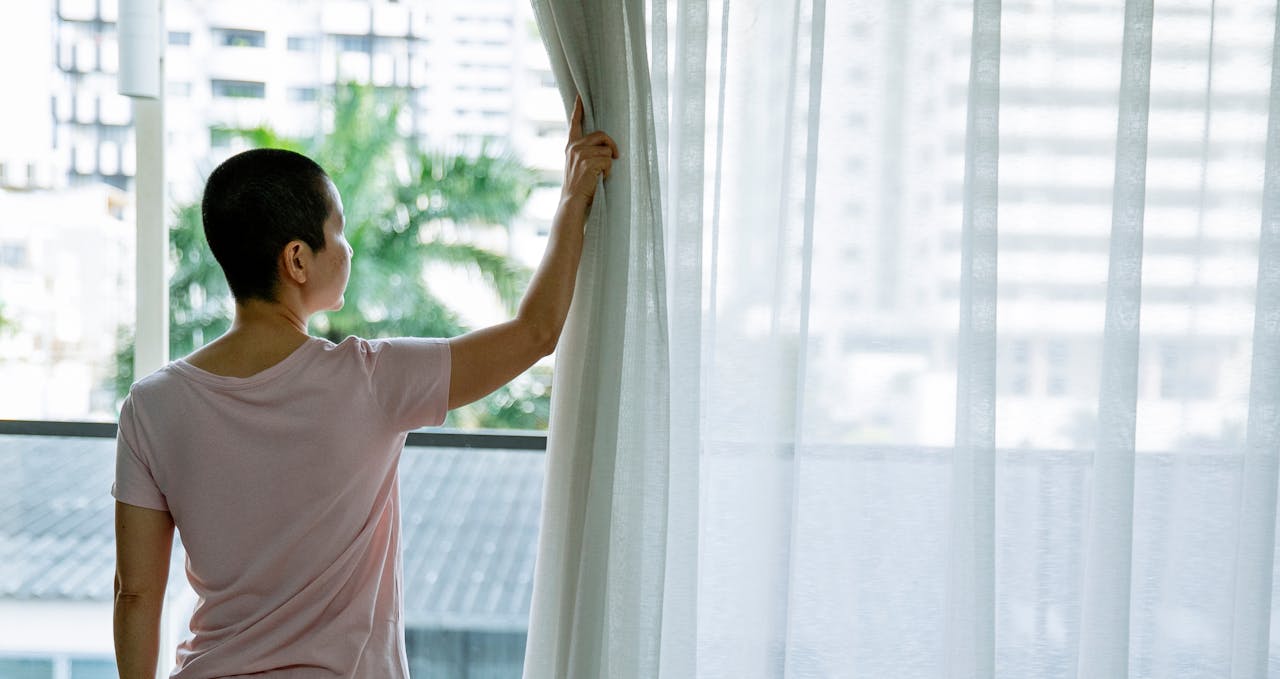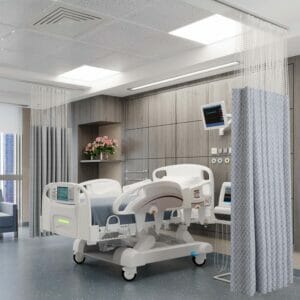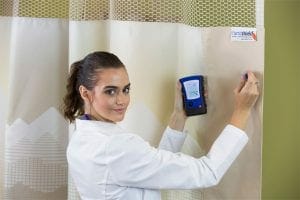When patients walk into a dental clinic, they often feel a mix of anticipation and anxiety. Beyond the reassuring smiles and professional equipment, one crucial yet understated element can make a significant difference in patient experience: Privacy Curtains. More than mere room dividers, these curtains play a vital role in protecting patient dignity, enhancing infection control, streamlining workflows, and elevating the clinic’s aesthetic appeal. In this comprehensive guide, we’ll explore every facet of privacy curtains in dental settings—covering design, materials, regulations, maintenance, and more—so you can make informed decisions that benefit both your patients and your practice.
1. Why Patient Privacy Matters in Dentistry
Dental treatments often require patients to recline, partially disrobe (e.g., remove jackets or scarves), and endure procedures that expose sensitive areas. Ensuring privacy:
- Fosters Trust: When patients feel their personal space is respected, they’re more likely to communicate openly about symptoms and fears.
- Reduces Anxiety: A curtained treatment area creates a calming cocoon, helping minimize the stress response that can exacerbate discomfort.
- Meets Ethical Standards: Protecting patient confidentiality aligns with HIPAA guidelines and professional codes of conduct.
By installing quality privacy curtains, clinics demonstrate a commitment to patient-centered care, which can translate into better satisfaction scores and stronger word-of-mouth referrals.
2. Enhancing Patient Comfort and Dignity
A dental chair under bright lights can feel exposed. Privacy curtains act as a visual and psychological barrier that:
- Shields patients from view of the waiting area or adjacent operatories.
- Creates a personalized “treatment suite” even within an open-floor plan.
- Allows clinicians to discuss sensitive information—such as medical history or treatment options—without concern for nearby auditory eavesdropping.
Select full-height, opaque curtains that extend from ceiling track to just above the floor; this ensures complete coverage while maintaining airflow. Soft, neutral hues like pale gray or muted teal promote calm without detracting from the clinic’s design palette.
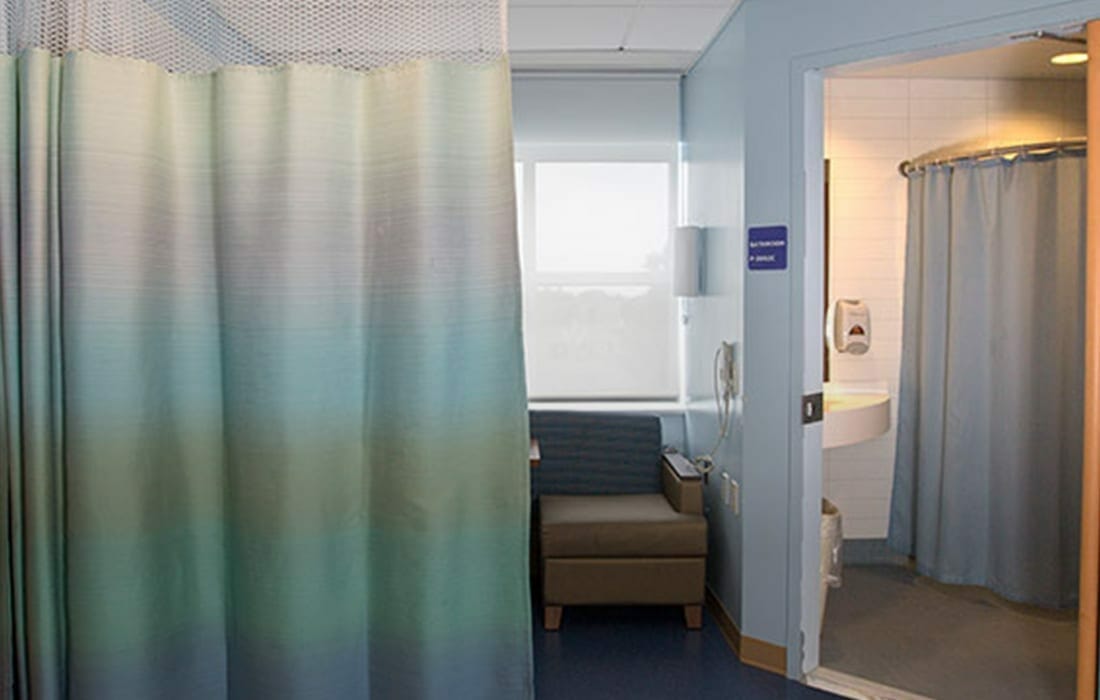
3. Infection Control: Curtains as a First Line of Defense
Privacy curtains in dental settings can harbor pathogens—saliva droplets, blood splatter, and aerosols often land on nearby fabrics. To minimize cross-contamination:
- Choose Antimicrobial Fabrics: Curtains treated with silver-ion or quaternary ammonium compounds inhibit bacterial and viral growth between cleanings.
- Implement Regular Replacement: Industry best practice calls for curtain changes every 30 days or immediately after visible soiling.
- Consider Disposable Options: For clinics handling high volumes or specializing in oral surgery, single-use non-woven curtains eliminate laundering logistics and reduce HAI risks.
For more insights on how privacy curtains support infection prevention across clinical environments, see our article on The Importance of Privacy Curtains in Emergency Departments.
4. Material and Construction: Balancing Performance and Aesthetics
Not all privacy curtains are created equal. Key factors to weigh:
- Fabric Weight and Opacity: Heavier-weave textiles block sound and light more effectively, but may be harder to maneuver. Lighter blends glide easily but should still meet opacity requirements.
- Durability: Reinforced hems and corner patches prevent tearing from frequent track glides. Look for high thread counts and tight weaves.
- Moisture Resistance: Vinyl-coated or laminated fabrics repel splashes and allow quick wipe-downs—ideal near sterilization centers.
- Flame Retardancy: Ensure materials comply with NFPA 701 standards to reduce fire risks.
By selecting fabrics that marry functionality with visual appeal, your clinic projects professionalism while safeguarding patients and staff.
5. Design and Customization: Blending Privacy with Style
Dental practices often strive for a welcoming atmosphere. Privacy curtains can contribute to branding and décor:
- Subtle Patterns: Tone-on-tone geometric motifs hide minor stains without appearing busy.
- Color Coordination: Match curtain hues to upholstery, walls, or cabinetry to reinforce design coherence.
- Custom Logos or Icons: Discreetly printed clinic logos or operatory numbers help with wayfinding and reinforce brand identity.
High-quality dye-sublimation printing ensures colors remain vibrant through repeated launderings, so your clinic always looks its best.
6. Regulatory Compliance: Navigating Codes and Standards
Dental clinics must abide by multiple regulations:
- HIPAA Privacy Rule: While curtains don’t transmit data, they help maintain confidential conversations.
- OSHA Bloodborne Pathogens Standard: Proper curtain selection and cleaning reduce employees’ exposure to infectious materials.
- ADA Accessibility Guidelines: Ensure tracks and draw cords are positioned within reach of all patients, including those with limited mobility.
- Fire Safety Codes: Only use flame-resistant fabrics certified to NFPA 701 or equivalent local standards.
Maintaining visible certification tags on each panel and keeping digital logs of cleaning and replacement schedules will help your practice stay inspection-ready.
7. Installation and Operational Best Practices
A well-designed curtain system optimizes both function and maintenance:
- Smooth-Glide Tracks: Invest in anodized aluminum or stainless steel rails that resist corrosion and facilitate effortless opening/closing.
- Universal Hooks and Gliders: Standardize hardware across all operatories to simplify panel swaps and reduce fumbling.
- Clear Draw Paths: Position curtain end stops to prevent panels from drifting into treatment zones or blocking emergency exits.
- Hands-Free Operation Options: Consider pull-rope or pedal-actuated systems in sterile procedure areas.
Proper installation ensures longevity and enhances staff efficiency during busy clinical sessions.
8. Maintenance and Cleaning Protocols
Regular maintenance keeps curtains hygienic and extends their service life:
- Scheduled Laundering: Follow manufacturer guidelines—typically a 140°F wash cycle with hospital-grade detergent.
- Visual Inspections: Assign a staff member to perform weekly checks for stains, tears, or compromised flame-retardant coatings.
- Rapid Response to Soiling: Any panel contaminated with blood or bodily fluids should be removed and laundered immediately.
- Documentation: Use barcode or RFID tagging to log panel usage, cleaning dates, and replacement thresholds.
Consistent maintenance preserves both the safety and appearance of your privacy curtains, reinforcing patient confidence.
9. Return on Investment and Cost Considerations
While premium privacy curtains involve higher upfront costs, their long-term value is substantial:
- Reduced Infection-Related Expenses: Antimicrobial and disposable options lower the incidence of cross-contamination, saving on treatment costs.
- Enhanced Patient Retention: A comfortable, private environment fosters loyalty and repeat visits.
- Operational Efficiency: Durable fabrics and smooth hardware cut down on staff time for adjustments and replacements.
- Regulatory Assurance: Compliance-ready curtains minimize the risk of fines or legal liabilities.
When calculating ROI, factor in curtain lifespan, cleaning labor, replacement cadence, and patient satisfaction metrics.
10. Technology Integration: The Future of Privacy Curtains
Innovation is transforming even the simplest clinical fixtures:
- UV-C Sanitization Tracks: Built-in UV-C emitters can disinfect curtains overnight, reducing manual workload.
- Sensor-Driven Alerts: Motion or proximity sensors notify staff when curtains remain open too long, maintaining privacy standards.
- Smart Inventory Management: RFID-enabled panels feed usage data into dashboards, streamlining reorder cycles and preventing stockouts.
Embracing these advancements positions your clinic at the forefront of patient-centric care.
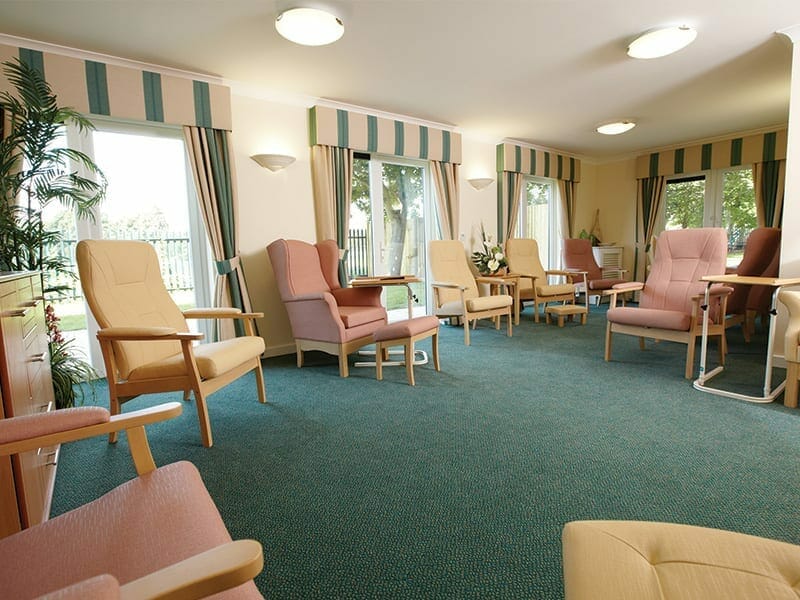
11. Selecting the Right Privacy Curtains for Your Practice
Choosing optimal curtains involves a structured approach:
- Assess Clinical Workflow: Map where private treatment areas intersect with high-traffic corridors or radiography zones.
- Gather Staff and Patient Feedback: Pilot sample swatches under actual lighting and within treatment chairs to evaluate texture and opacity.
- Vet Multiple Vendors: Compare lead times, after-sales support, warranty terms, and emergency restock options.
- Balance Budget and Performance: Determine whether antimicrobial treatments or disposable panels deliver better value based on your clinic’s patient volume.
At HAIGuard, we recommend prioritizing fabrics that marry ease of use with rigorous infection-control features, ensuring both patient satisfaction and operational efficiency.
In the world of dental care, every detail counts. From the precision of your instruments to the warmth of your décor, these elements shape the patient experience. Privacy Curtains occupy a unique intersection of patient comfort, infection control, regulatory compliance, and brand presentation. By selecting the right materials, embracing best installation and maintenance practices, and exploring emerging technologies, dental clinics can transform simple fabric panels into powerful tools for excellence.
For deeper insights into how privacy curtains enhance safety across all clinical environments, explore our posts on The Importance of Privacy Curtains in Emergency Departments and Why Every Modern Hospital Needs High-Quality Privacy Curtains.
Investing in premium privacy curtains is an investment in your patients’ dignity, your staff’s efficiency, and your practice’s reputation—a commitment that pays dividends day after day.





